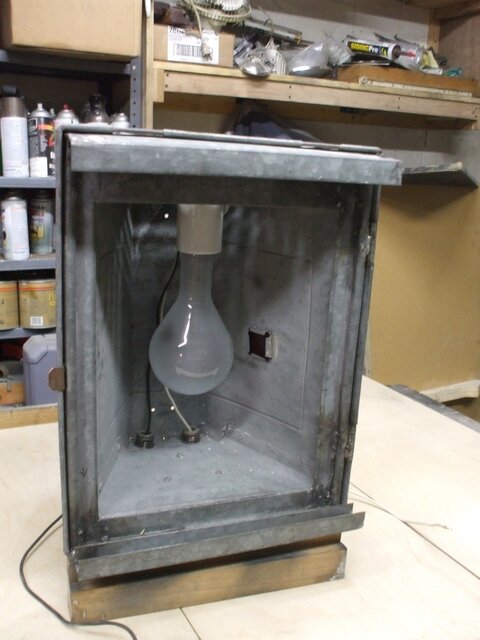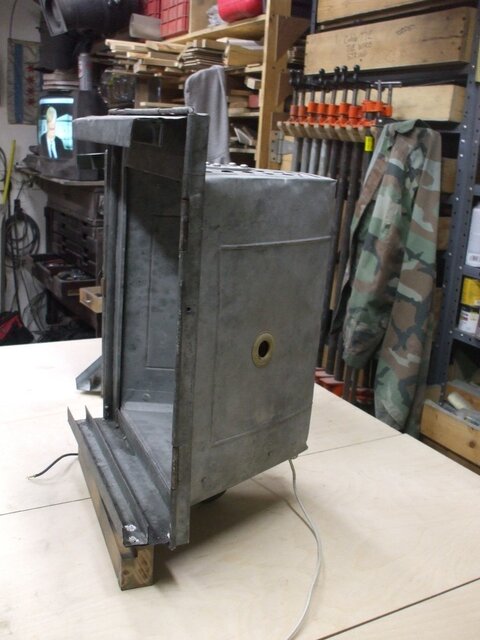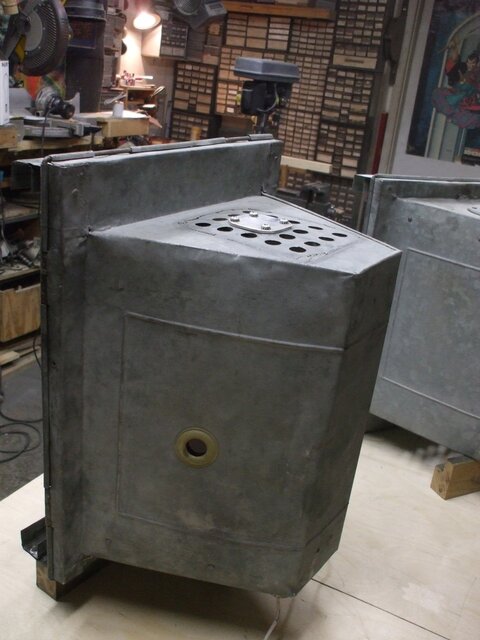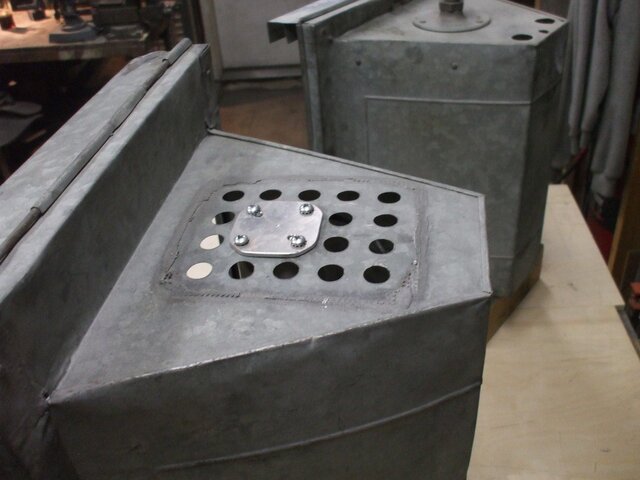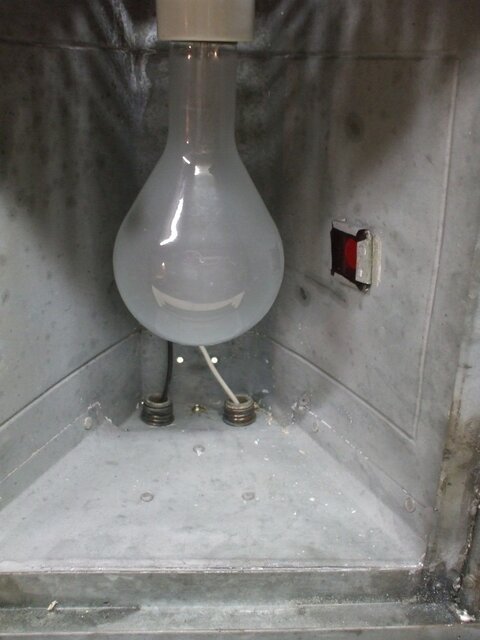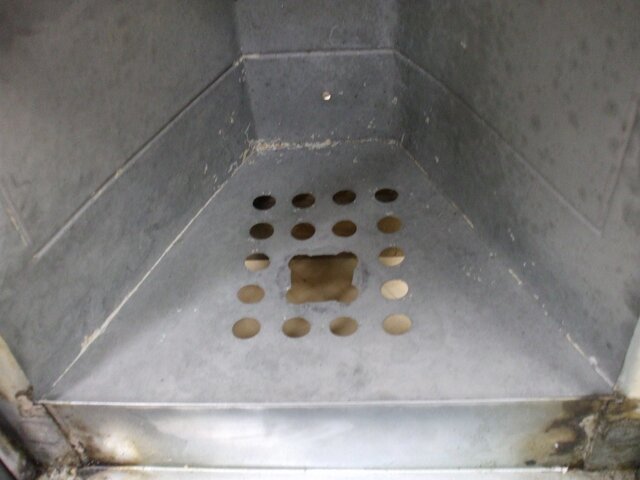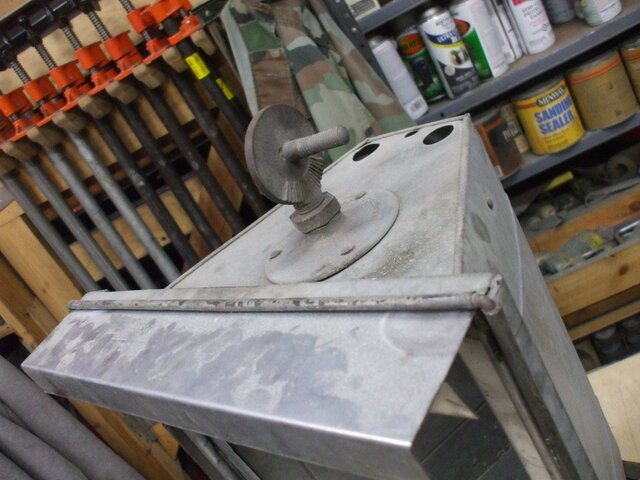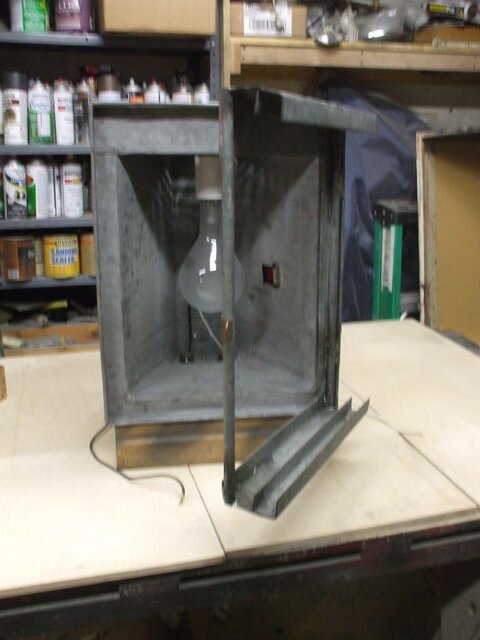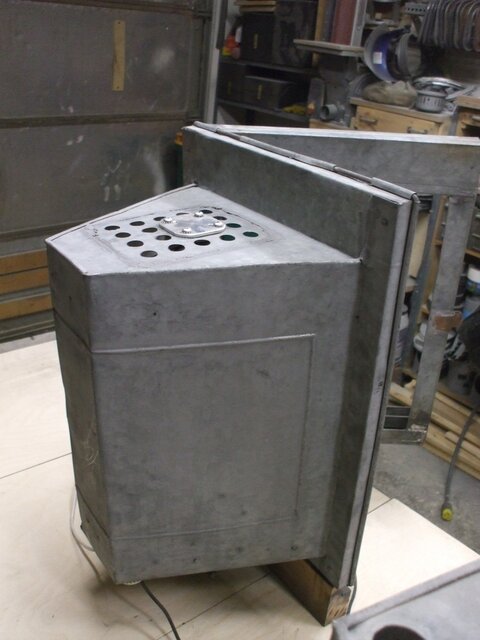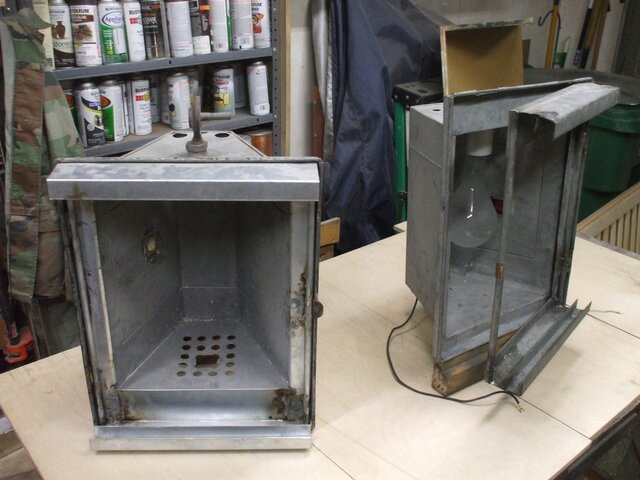Anyone have one? They a little smaller than the 1Kw version Ovalitte, and seemingly have a venting hood atop it which is shown in a Brekert page 25 from the listed 1929 cagalogue, nothing about the Benjamen Lighting out of Chicago version of the fixture in existance from 1911 that I know of for a company in info about this light, but the Brenkert version is seemingly similar in photo and description.
From the Brekert catalogue, I get the sort of hood shape that kind of matches up with what's removed from this fixture, but assuming this hood, how was it vented isn't shown. http://www.film-tech.com/warehouse/m...NKERTCAT26.pdf page 25 and Kliegl and other brand catalogues don't list any 500w version of a Olivalitte.
Made a prototype of this missing hood for the current brand and it's different in workings for shape for first guess. This beyond how that hood shape was vented in not shown. Just that top hat high school graduate hood atop the fixtuere that I'm working on at the moment. I have a 5"x6" removed from the frame the solder splices showing on the fixture that this hood will have fit into in size to such a rectangular shape.. Tried something that might fit but don't overall work in a proximity/artistic sense to the fixture. This much less now the top hood, how was it vented?
Beyond that, was it holes on the hood's sides or something else in venting? A question, anyone have one or am I on my own in seeing a catalogue picture and inventing something? Anyone ever seen a 500w version of the Olivalitte and how it was vented atop it? Got the rest of the fixture figured out, but just now working on inventing the to venting cap to it.
From the Brekert catalogue, I get the sort of hood shape that kind of matches up with what's removed from this fixture, but assuming this hood, how was it vented isn't shown. http://www.film-tech.com/warehouse/m...NKERTCAT26.pdf page 25 and Kliegl and other brand catalogues don't list any 500w version of a Olivalitte.
Made a prototype of this missing hood for the current brand and it's different in workings for shape for first guess. This beyond how that hood shape was vented in not shown. Just that top hat high school graduate hood atop the fixtuere that I'm working on at the moment. I have a 5"x6" removed from the frame the solder splices showing on the fixture that this hood will have fit into in size to such a rectangular shape.. Tried something that might fit but don't overall work in a proximity/artistic sense to the fixture. This much less now the top hood, how was it vented?
Beyond that, was it holes on the hood's sides or something else in venting? A question, anyone have one or am I on my own in seeing a catalogue picture and inventing something? Anyone ever seen a 500w version of the Olivalitte and how it was vented atop it? Got the rest of the fixture figured out, but just now working on inventing the to venting cap to it.
Last edited:



